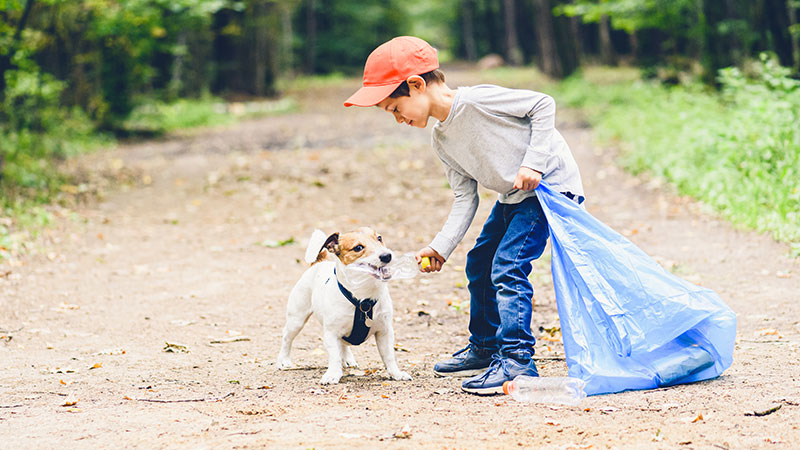Chances are you already do your part in some way to reduce greenhouse gas emissions to slow down climate change. If you shop local and organic foods that are in season, take your reusable bags to the store, and/or carpool when possible, you’re already heading in the right direction. You’re doing what you can to reduce your carbon footprint, but how about your furry friend’s carbon pawprint? There are many ways you can be greener in the pet department. Here are just a few…
Adopt your next four-legged companion
I was having coffee with a friend who just got a puppy and she said, “You were so smart to adopt a dog instead of going the puppy route.” She and her husband had wanted their children to experience the excitement of raising a dog through puppyhood, but after dealing with the razor-sharp puppy teeth and the late-night potty trips, she was questioning her decision. There are many reasons to adopt besides the fact that you can choose a dog who is already potty trained and out of the biting stage. Simply put, adopting saves lives, reduces stress on shelters, and combats pet overpopulation. Read about Hattie’s story and the benefits of adopting in our post, Adopt a Shelter Pet.
Choose organic food for your pet
Not only is organic food better for the environment, it is better for your pet as well. Some ingredients in conventional foods are grown with pesticides and some are shipped from overseas. By choosing organic food for your pet, you are choosing a diet that is more nutrient-dense and one that is developed using the same USDA National Organic Program rules applied to food for humans. Feeding your dog or cat organic food can be more eco-friendly because no synthetic fertilizer, irradiation, or genetic engineering is used.
Choose natural parasite protection
Your first line of defense when going green in this department should be taking preventative measures. Vacuuming more often, washing bedding, and brushing your pet with a flea comb can stop pests before they become a problem. Washing your dog with a little bit of dish detergent can also rid your dog of fleas. Fleas do not grab onto hair shafts, so the pesky little insects will fall off and drown. Another alternative to medicated flea controls are essential oils. They have made quite a statement in recent years as being a safer alternative when it comes to many of life’s “pests”, however you should check with your veterinarian to be sure the oils you intend to use are safe for pets. Flea spritzers and shampoos are available containing oils such as mint, citronella, and geranium that may keep the pests at bay. It is always a good idea to check with your vet before using new products on your pet to ensure they are safe.
Use earth-conscious products
One of the first things my parents gave us when we adopted our Hattie-dog was a recyclable box of earth rated poop bags. It is safe to say these are the only bags we’ll ever use! You can find them here. These bags will break down at a faster rate than a plastic bag and smell fantastic (which is a lot more than I can say for her poop).You can also purchase cat litters made from recycled newspapers that are chemical-free, biodegradable, and absorbent.
Moving on from the potty department, you can go green by purchasing dog and cat toys made from non-toxic rubber and recycled materials. You may even choose to make your toys out of items already available, such as an old sock or a paper towel tube. Simply stretch the sock and tie a few knots in it. You could also stuff a plastic water bottle in one end of the sock to make that crinkly noise all dogs love! Use a paper towel tube to make a treat puzzle. Cut a few holes in it and fill with treats. Tape the end of the tube with duct tape and watch your pet go crazy trying to recover the treats! Be sure to supervise your pets while they play with toys, so they don’t eat any of the parts!
Going green is good for everyone!
In the words of Kermit the Frog, “It’s Not Easy Being Green” but it is important. Equally as important as keeping the earth healthy, is keeping your pet healthy! Preventative care such as brushing your pet’s teeth and visiting the vet at least once per year can help keep your pet feeling his best. Luckily, pet insurance can reimburse towards preventative care and annual vet visits! By making some small changes in your routine you can be on your way to reducing your pet’s carbon paw print in a major way!

